.Architecture Around the World
Central Station
(Stazione di Milano Centrale) main block and two wings 500 ft. long
Milan, Italy
Milano Centrale - Official Home Page
(online May 2016)
| Milano Centrale is the main railway station of
Milan, Italy, and one of the main railway stations in Europe. The
station is a railway terminus and was officially inaugurated in 1931
to replace the old central station (1864), which was a transit station
and could not handle the new traffic caused by the opening of the
Simplon tunnel in 1906. The station has no definite architectural style, but is a blend of many different styles, especially Liberty and Art Deco, but not limited to those. It is adorned with numerous sculptures. -Wikipedia: Milano Centrale Railway Station (online April 2016) |
| Milan's monumental Stazione Centrale (Central Station) is one
of Europe's largest railway stations. It was constructed between 1912
and 1931 after a design by Ulisse Stacchini who created an enormous
head building based on the monumental baths in imperial Rome. Stacchini's creation, inspired by the Baths of Caracalla in Rome and influenced by the magnificent Beaux-Arts railway stations in the United States, was altered during the long construction period, which would last until 1931. During this period dictator Mussolini had grabbed power so it's probably no surprise that the end result is more monumental than the original design; its bombastic appearance with muscular sculptures was a good fit with Mussolini's preferred architecture style. - A view on Cities: Central Station (online April 2016) |
 Photo source: A View on Cities: Central Station (online May 2016) |
| 2016 photos Exterior 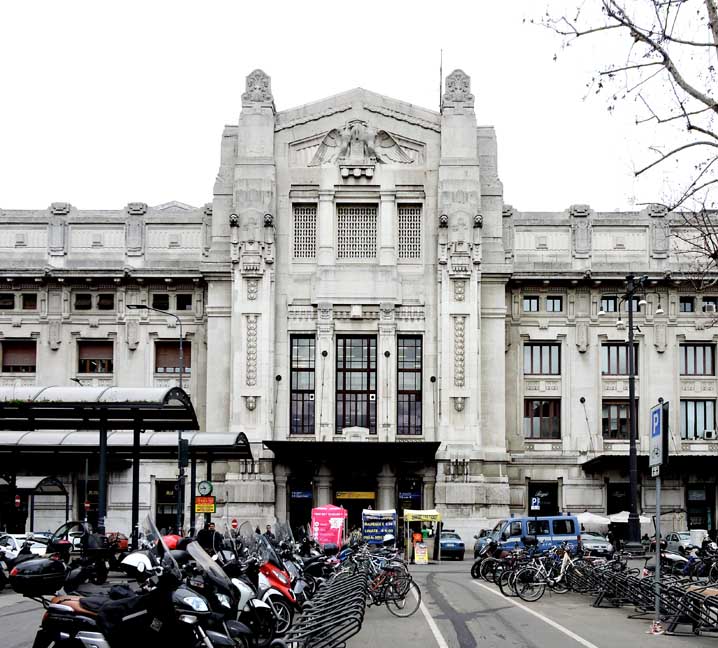 Details below: 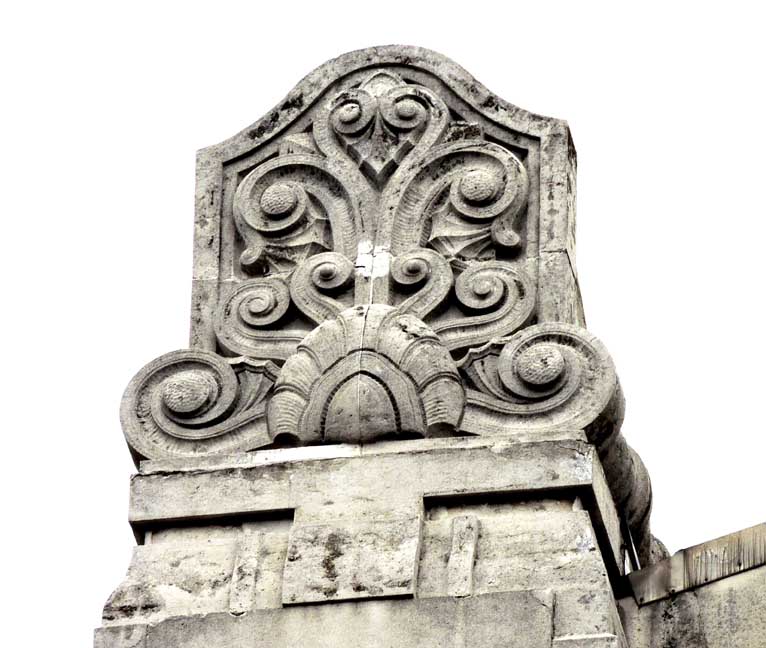 Volutes 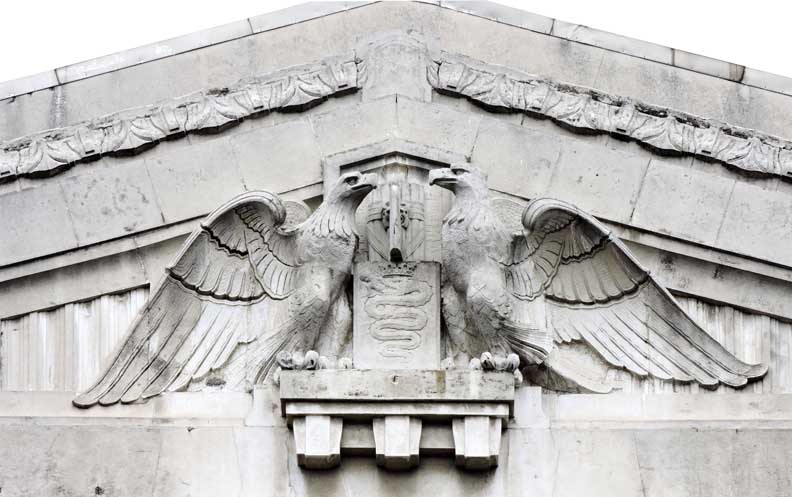 "At the insistence of Mussolini’s fascist regime the station building was decorated with symbols demonstrating strength and power. The roofs were adorned with bombastic sculptures of muscular animals from mythology: winged horses, lions, bulls and eagles." - Arjan den Boe, Milano Centrale (online May 2016) ... Note snake, detailed below, in between the eagles 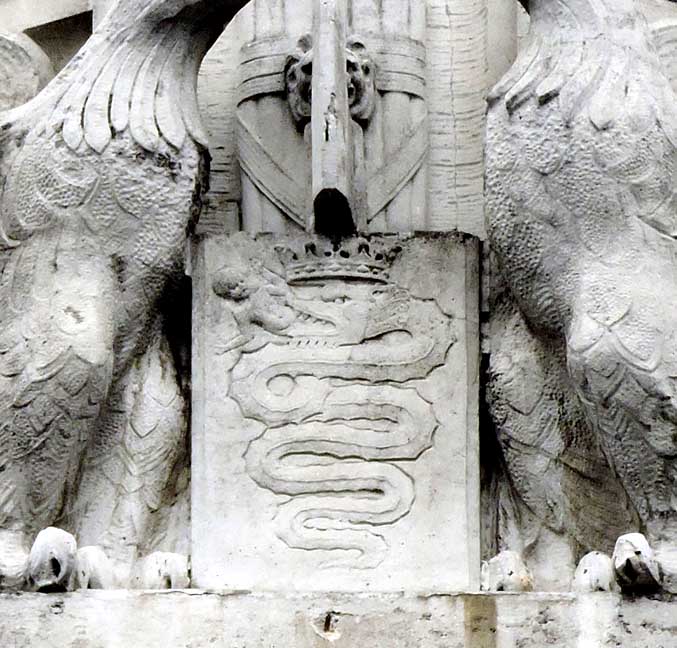 Biscione 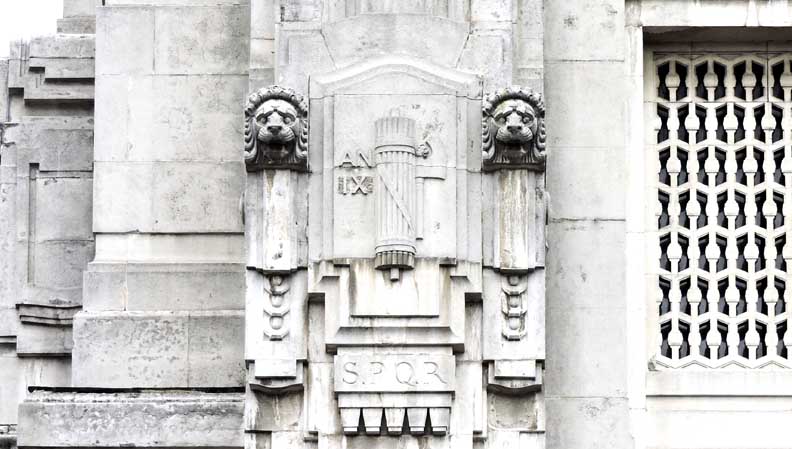 "The corners of the building were decorated with fasces: bundles of rods tied around an axe, in Roman times symbolizing united strength and authority. Mussolini selected this ancient symbol as a logo for his fascist party. The letters SPQR, applied on the station in several places, were an acronym of Senatus Populusque Romanus, the official Latin name of the Roman Empire. The Italian fascists liked to refer to the golden age of the Roman era." - Arjan den Boe, Milano Centrale (online May 2016) 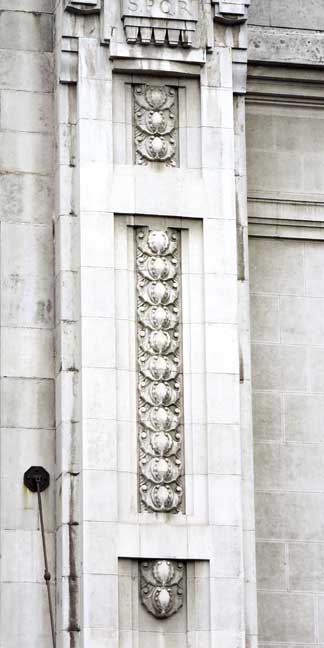 Detail below: 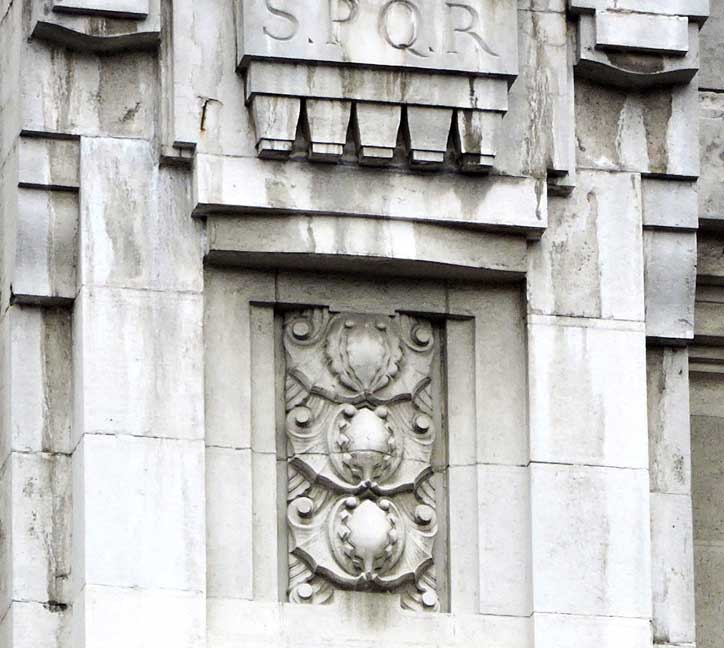 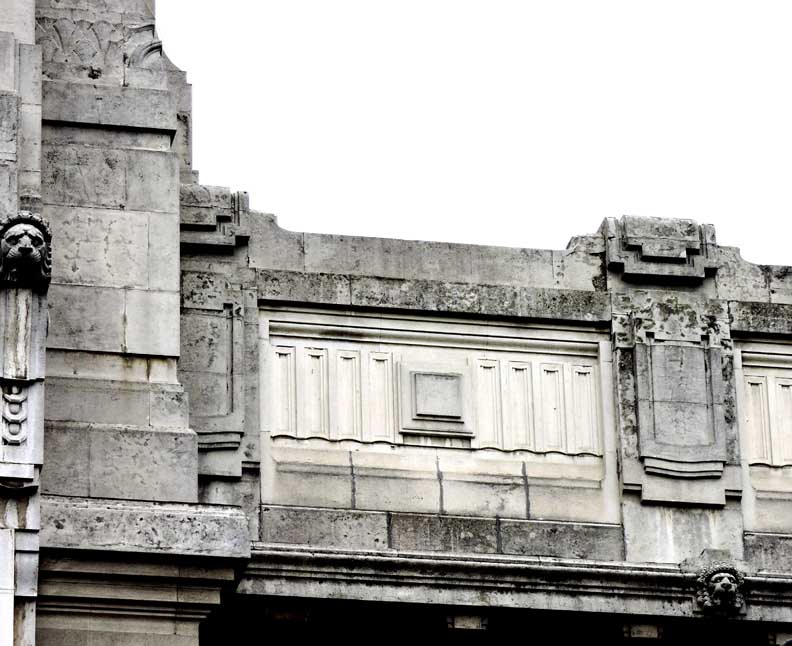 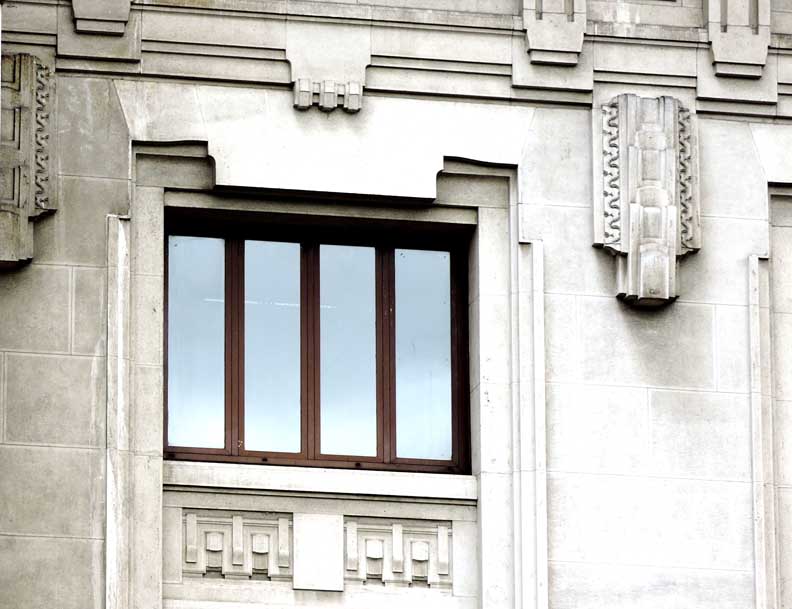 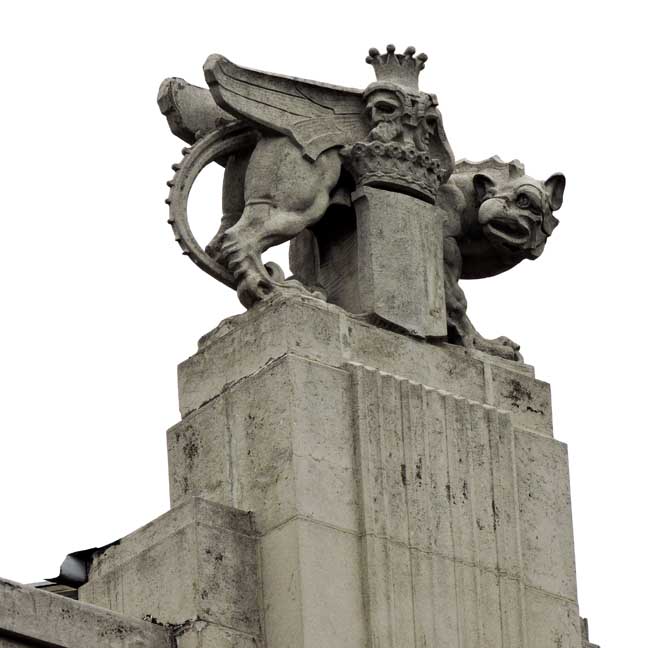 Detail below: 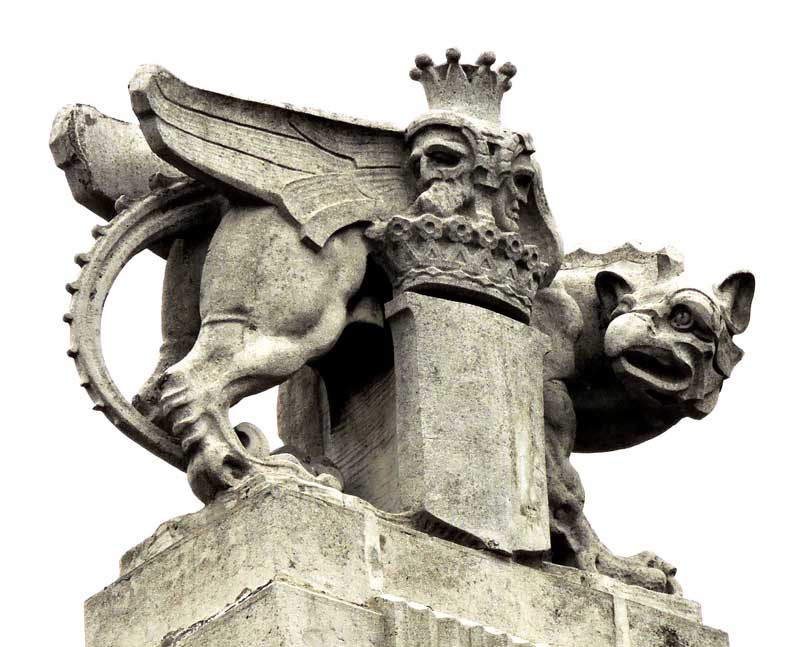 |
Interior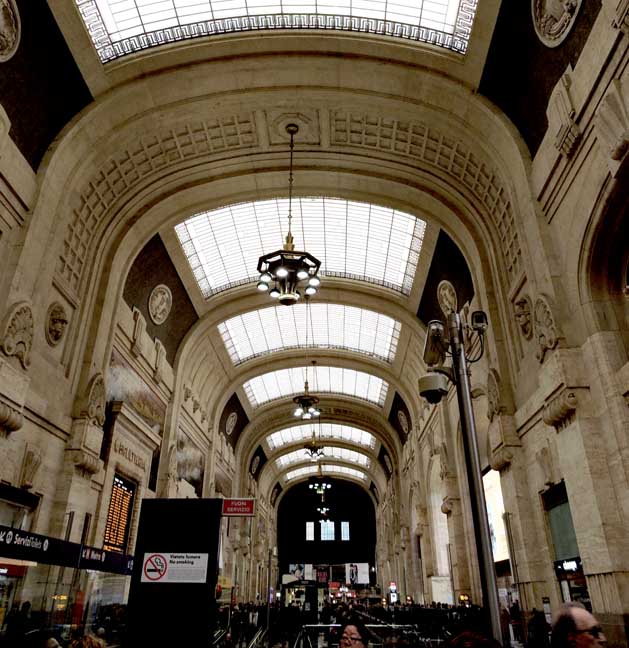 Booking hall and concourse ... Barrel roof ... The walls are decorated with sculpture groups, pilasters, and reliefs depicting figures in Roman garb. 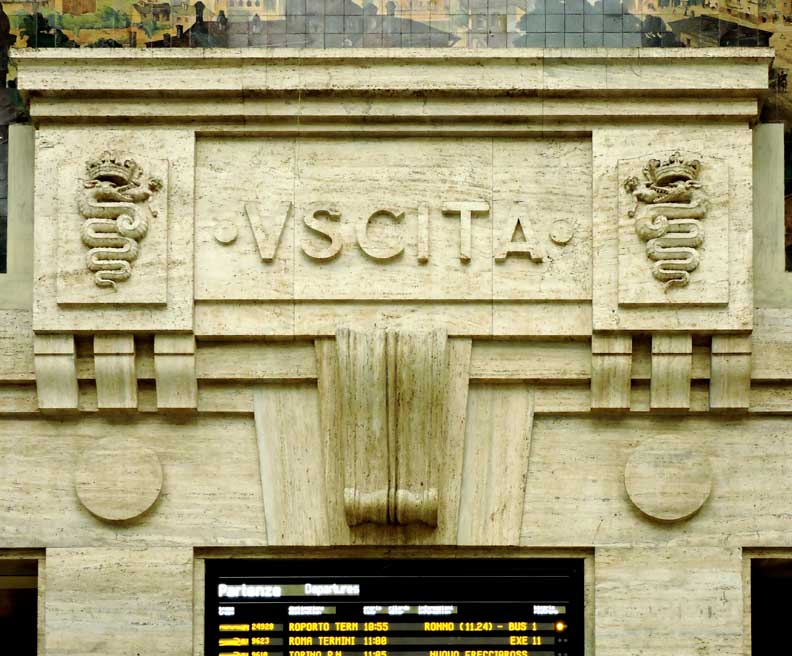 "Uscita": exit ... Upper left corners: Bisciones ... The walls are covered with marble and travertine stone. 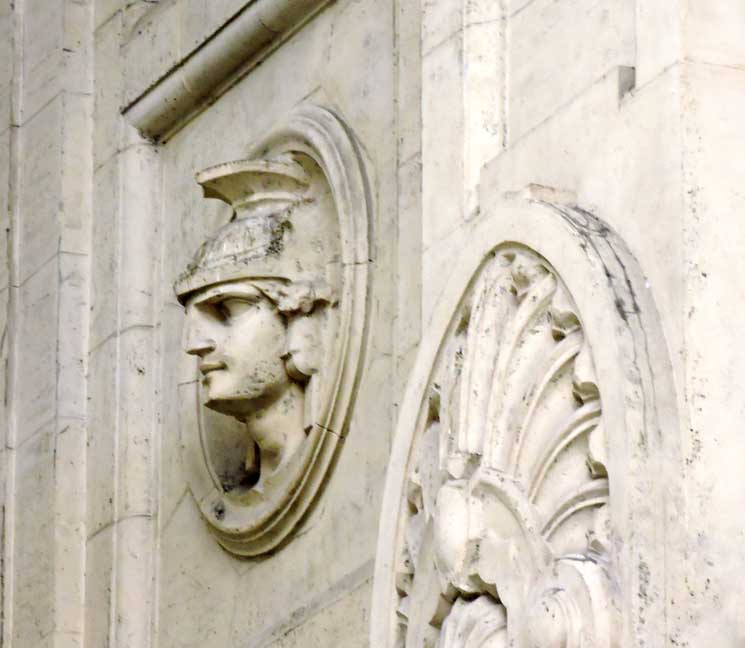 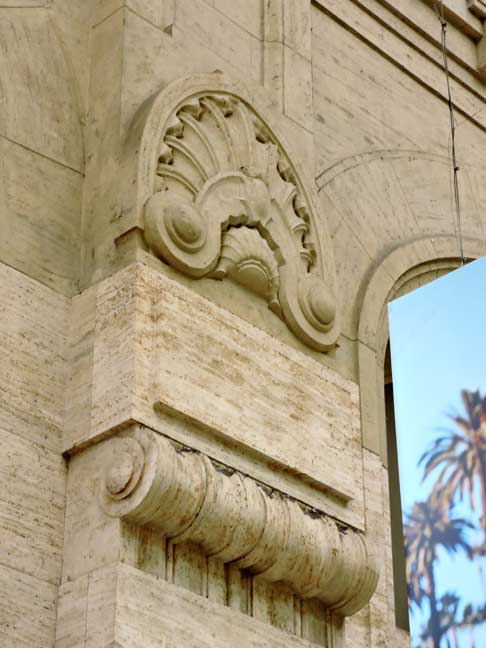 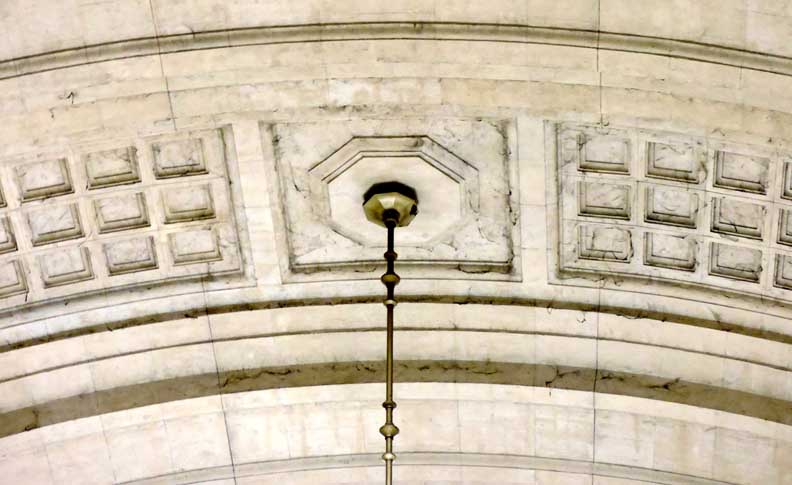 Coffered marble ceiling 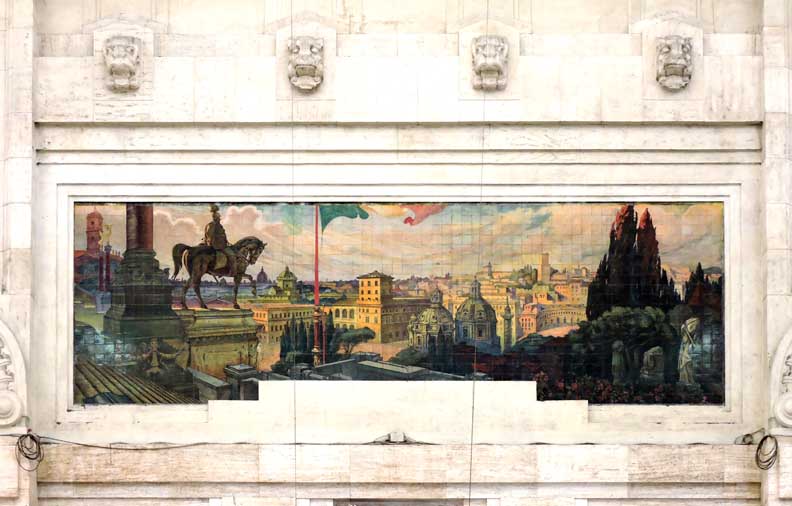 |